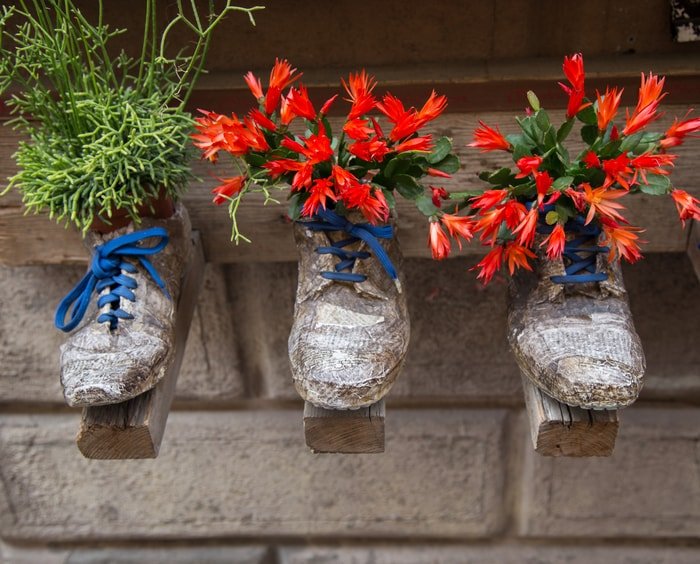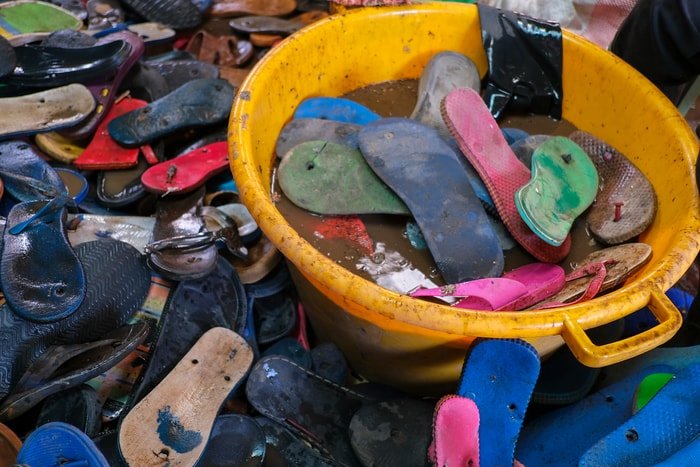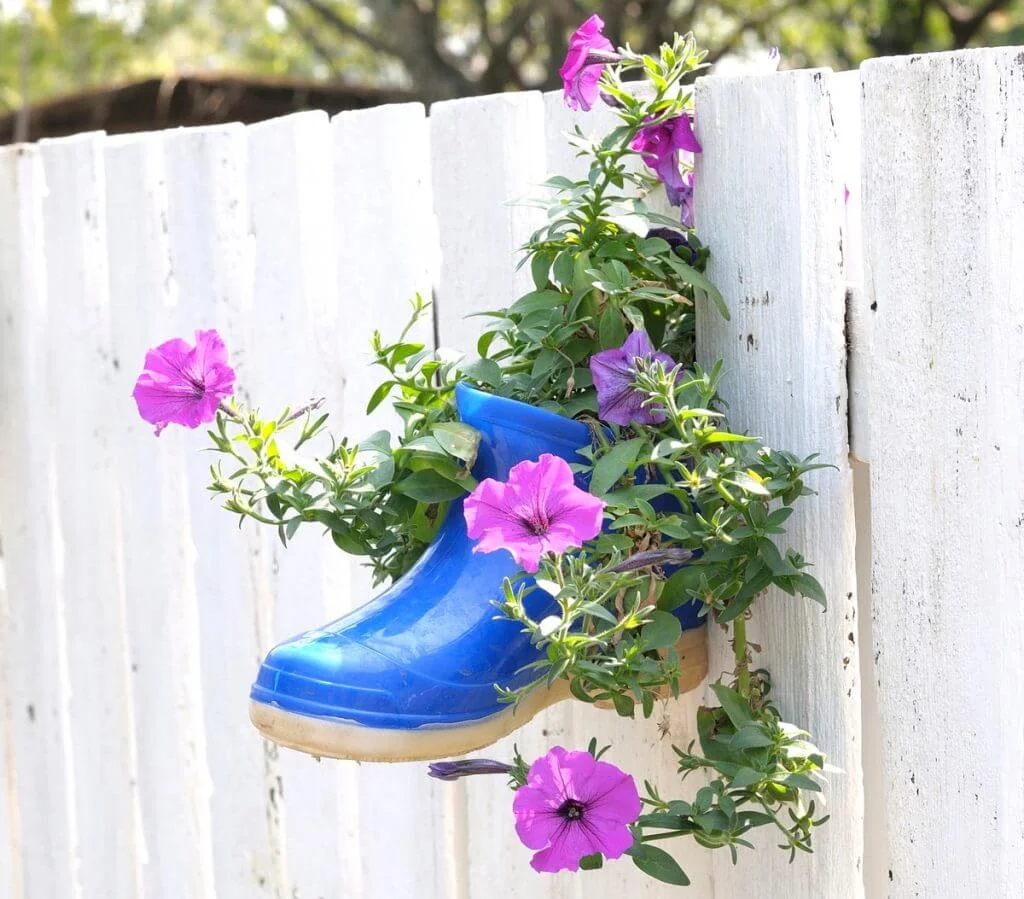Last Updated on October 12, 2024
We all have a couple of old pairs of shoes that we can no longer wear. Usually, we dump them in a trash can, and they eventually end up in a landfill somewhere. Discarded shoes take as long as 40 years to completely breakdown, and this takes a toll on our already degraded environment. Below, I have compiled several ways on how to recycle unwearable shoes and reduce our carbon footprint. It is a simple step but with a significant impact on conserving our environment.
Table of Contents
Why Should We Recycle Unwearable Shoes?
Old shoes that are thrown away usually end up in landfills. Thus, they contribute to stocking landfills with the trash that takes too long to degrade. Boots carelessly discarded into the surrounding make our environment dirty, and the shoes act as breeding grounds for pests, insects, and microbes that may spread diseases.

Shoes made of organic material such as leather release methane when breaking down. Methane is one of the gases that contribute to global warming, which is a significant cause of climate change.
Recycling shoes is a contribution to the protection of our environment.
Ways To Recycle Unwearable Shoes
Our environment takes care of our survival, and to return the favor here are effortless ways we can recycle worn-out shoes. Here are several ways of how to recycle shoes:
-
Donate to a Recycling Program
You can donate old pairs of shoes for recycling centers if you cannot find a way to recycle them. There are many recycling centers and programs available in many countries across the world. Centers such as charity aids provide shoe recycling bins where one can donate shoes.
However, since we are talking about unwearable shoes, it would be insensitive to donate them to charity. The best recycling programs to give these shoes away is to recycle them.

Programs such as Nike Reuse-a-Shoe accepts donations of worn-out shoes of any brand. The unwearable shoes are used to make a material known as Nike Grind. The Nike grind is used to make other products such as new shoes and sports apparel. Nike grind is also used to make playing surfaces and surfacing running tracks.
Some artistic people use materials from old shoes to create sculptures that are sold for a profit.
Other recycling centers recover materials from worn-out shoes and use the materials to make new products. You can surf the internet to look for a recycling center near you.
-
Repair and Repurpose
Having unwearable shoes does not mean you no longer have use for them. I recently saw an article on the internet that described how to reuse old wine bottles by painting them and using them as home décor or flower vases. The artwork was incredible and made good pieces of décor.
In the same way, you can repair old and worn-out shoes and find a unique use for them.
Here are a few examples:
1. Use old Shoes as Décor: For instance, you could repair a pair of Jordans and stick them to your bedroom wall next to a full wall portrait of your favorite baller. Some types of shoes are also great for creating beautiful wall hangings.
2. Use as Planters: Some types of shoes can also be used to plant flowers in a garden. The large factory safety boots can make a unique flower pot that you can place in your backyard garden. Pumps are perfect for planting succulent plants that do not overgrow.
3. Use as Racks: you can also transform your old shoes into different types of shelves. Screw old shoes to the wall and use them as a jewelry rack. High heels can make a unique coat, hat racks, or ring racks. However, remember first to repair and paint the shoe or part of the shoe to make it appealing.
4. Use as Birdhouse: an old shoe can also provide a home for our fatherly friends. Collect your old shoes and nail the soles on the barks of your garden trees. You can put some bird food inside to attract the birds.
5. Use to Make Pillowcase: yes, no typing error here; old shoes, especially leather ones, can be recycled to make pillowcases. The upper parts of the shoes are quilted together to create a unique pillow. You can also try with other types of shoes, especially those made out of cloth materials.
6. Use as Stepping Stones: you can also repurpose old shoe soles by using them to make walkways in your garden or on the steps to your front door. Find a way to permanently hold the shoe on the surface, depending on the type of ground.
7. Use as Wind Chimes: another way to repurpose old shoes is by using them to make wind chimes for your garden. Flip flops are better suited for this recycling method
8. Use as Welcome Signs: a neatly crafted collection of flip flops can make a cute and unique door welcome sign. You can also stick together old soles to build a welcome doormat.
Personally, I use old flip flops and shoe soles as hinges when making sheds. They do not last as long as metallic straps, but they do the job and reduce solid waste.
Final Thoughts
As you can see, there are several ways in which we can recycle our worn-out shoes. If you are not for the DIY methods, programs such as the Nike Reuse-a-Shoe will do the recycling for you. It might seem like a little garbage to you, but those three pairs of old sneakers you threw away might end up in the ocean and kill many marine animals.
Overall, in this article, we talked about the different ways of how to recycle unwearable shoes. We found out that the best way to do that is to donate them to recycling programs or do our DIY repurposing projects.
Recycling is one of the best ways to help the planet. If you have any questions, feel free to comment and equally feel free to add suggestions or other recycling methods.

Barbara is an environmental activist and sustainability advocate who loves living green and sustainable. She firmly believes in reducing her carbon footprint and has been making great strides towards achieving this goal. Barbara is a vegan and avid recycler and has been actively involved in community gardens and other green initiatives. She is passionate about spreading awareness about the importance of living in a sustainable and eco-friendly manner. Barbara is always looking for ways to make a difference in her community and beyond. She is a huge advocate for preserving nature and the planet for future generations.

